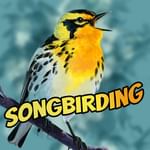Heart's Content Scenic Area is one of the few "old growth" forests in Pennsylvania.
Instead of going deep into the old growth though, today I’ll be exploring the picnic area and nearby interpretive trails. It may seem counterintuitive, but the greatest diversity of songbirds can be heard by sticking close to edge habitat — that is, habitats that represent border between two or more habitats. In this case, the open meadow of the picnic area, and the old growth of Heart’s Content.
eBird Checklist for the outing this was recorded during: https://ebird.org/checklist/S119284081
Download Merlin Bird ID today: https://merlin.allaboutbirds.org/
Credits
Songbirding: The Allegheny National Forest is a Songbirding Studios production.
Recorded, engineered, narrated and created by Rob Porter.
The Songbirding cover art (Blackburnian Warbler) is by Lauren Helton: https://tinylongwing.carbonmade.com/projects/5344062
Creative Commons music is from Jason Shaw.
Learn how to support the show at https://songbirding.com/support
Support Songbirding: A Birding-by-ear Podcast by contributing to their tip jar: https://tips.pinecast.com/jar/songbirding
This podcast is powered by Pinecast. Try Pinecast for free, forever, no credit card required. If you decide to upgrade, use coupon code r-da20d0 for 40% off for 4 months, and support Songbirding: A Birding-by-ear Podcast.



